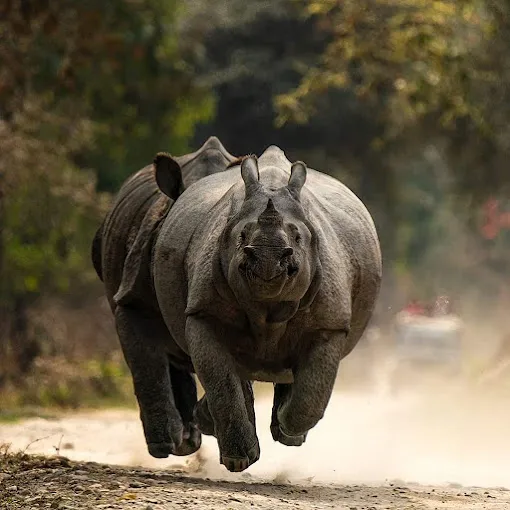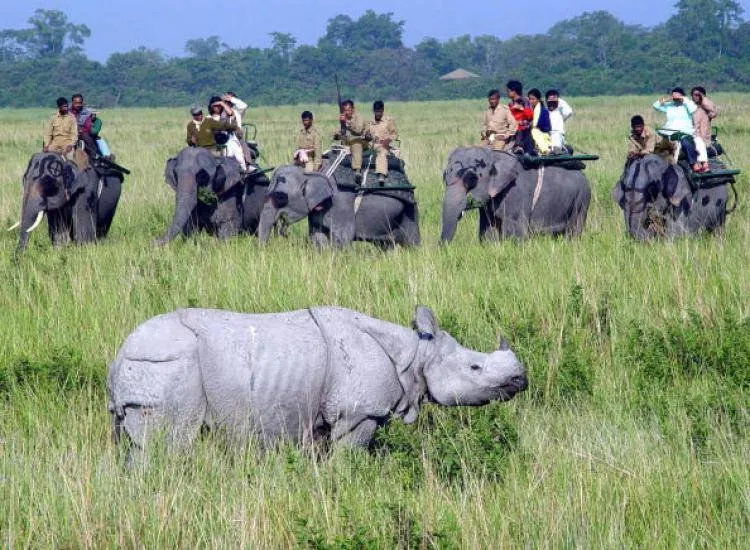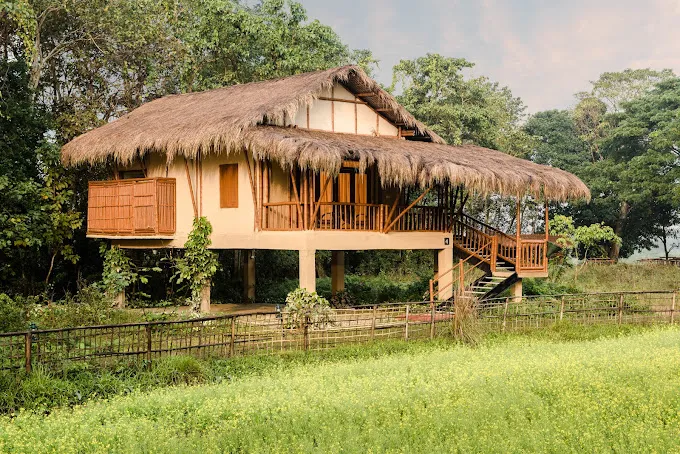
Kaziranga National Park
Assam, India
Kaziranga National Park in Assam is a vast expanse of tall elephant grass, marshland, and dense tropical moist broadleaf forests, criss-crossed by four major rivers, including the Brahmaputra, and the park includes numerous small bodies of water. Abode of the world’s most exquisite and rare species, it is an Elysian land spread across the flood plains of the mighty Brahmaputra. Nestled on the edge of the Eastern Himalaya, this World Heritage Site is one of the most significant conserved forest areas on earth.
It supports rich and varied life forms including the majestic One Horned Rhinoceroses and is visited by many enchanting rare migratory birds. Kaziranga is truly an unhurried drive through the impregnable forests and awe inspiring landscapes. It's enthralling beauty is certainly worth experiencing.

Kaziranga National Park Tickets Prices:
The department charges entry fees of Rs 115 per person. If you take DSLR Camera then it is Rs 100, Road tax Rs 300 and Rs 100 for security
Kaziranga Jeep Safari:
- There are morning safaris and evening safaris. You can take a morning elephant safari. These start at around 7 am in the morning. For the evening safari, you can take a jeep Safari in the afternoon at around 1:30-2pm and it will bring you back before dark.
- Jeep safaris usually happen around the Kohora range.
- The range itself is quite interesting with wide open spaces, dense jungle, watering holes and streams. You will come across rhinos, water buffalo, deer and elephants, the tigers are likely to remain elusive. On the Kohora range, the most visited among the lot in Kaziranga, your jeep safari lasts around an hour, where all the sightseeing happens.
- Jeep safaris usually cost around Rs 4000 depending on which range. The place you stay at will get you organized if you ask the front desk.

There are multiple ranges in Kaziranga. The safari timings mentioned above are for the Kohora range, the main Central forest range of Kaziranga. Other than Kohora, you can go for a safari in the Agoratoli range or the Bagori Range. There's another range called Burhapaahar range but there are not many safaris in that range. The Agoratoli range is more famous for birdwatching while Kohora and Bagori Range have higher chances of seeing wild animals including the One Horned Rhinoceros
Where to stay in Kaziranga?
Good places to stay in Kaziranga when you have a higher budget includes Diphlu River Lodge, Kathoni Farmstay, Iora Retreat, Borgos Resort & Spa
Places to stay in Kaziranga on a reasonable budget includes Bon Villa Retreat, Sneha Bhawan

Best time to visit Kaziranga:
The best time to visit Kaziranga National Park is during the winter season, from November to April. Here's why?
- Pleasant Weather: The weather is cool and dry during these months, making it comfortable for outdoor activities like wildlife safaris.
- Wildlife Sightings: The dry season makes it easier to spot animals as they congregate around water sources.
- Park Accessibility: The park remains open for visitors during this period.
Peak Season: November to February is peak season, so expect higher crowds and potentially higher prices for accommodation.
Monsoon Season: The park is closed from May to October due to heavy rainfall and flooding.
Popular Place Around
You can also visit this places















